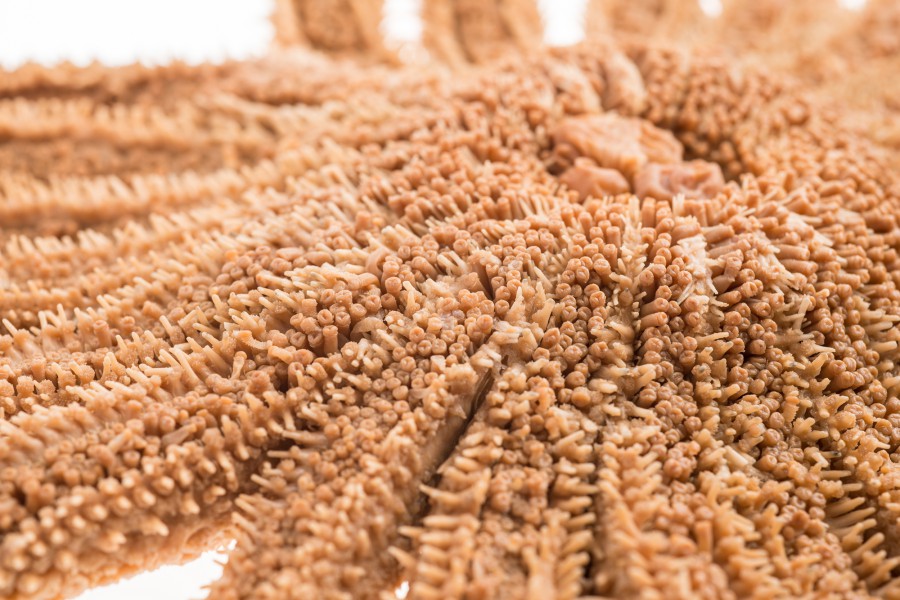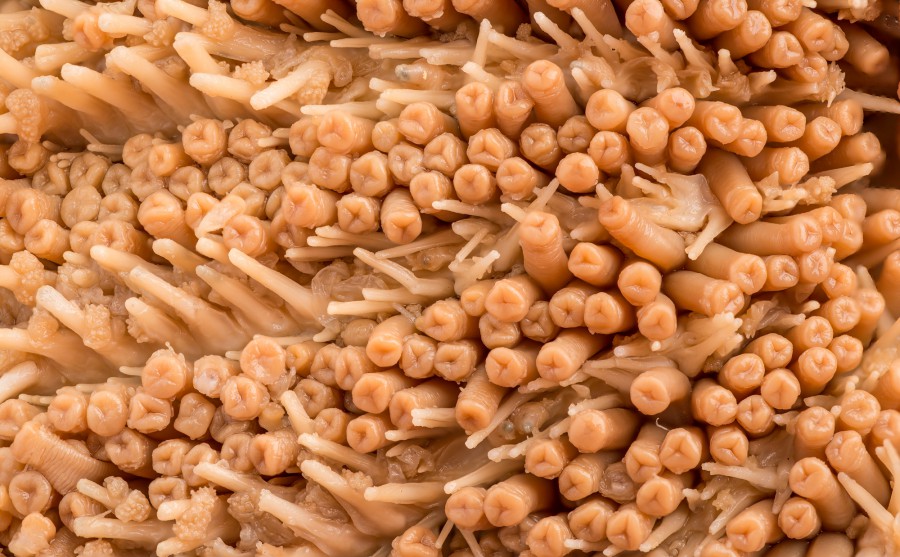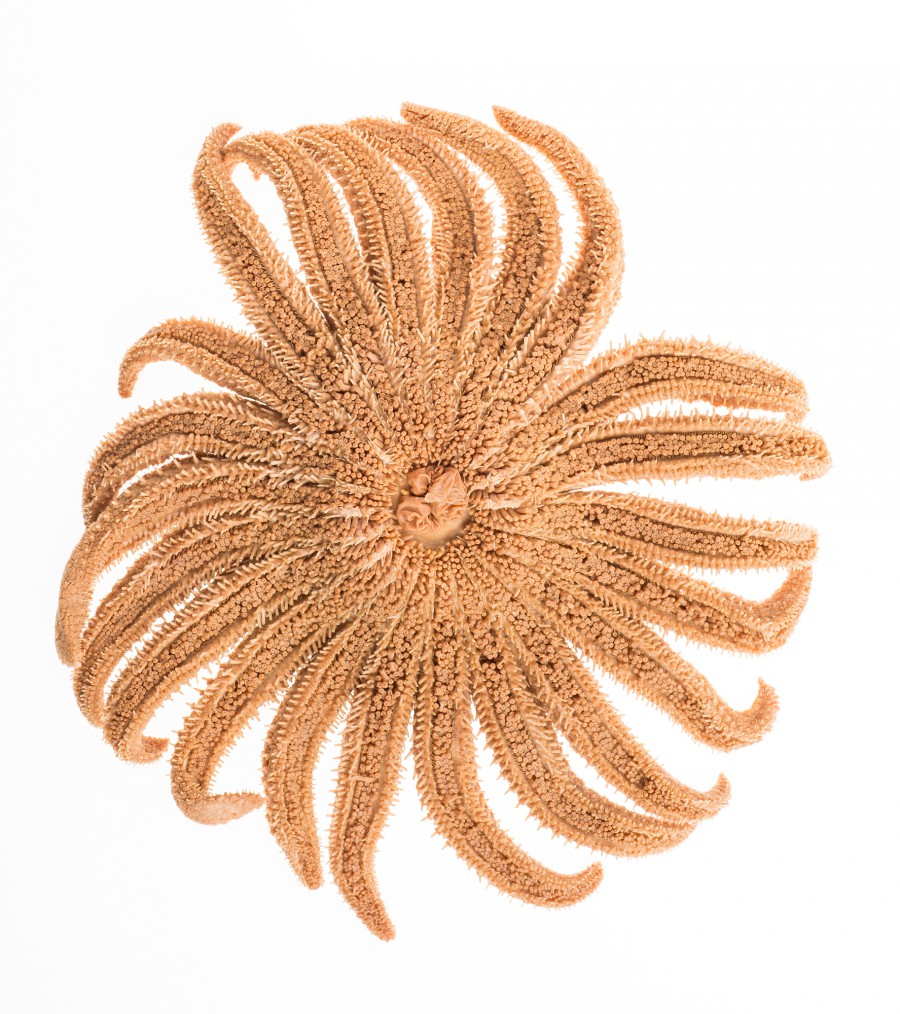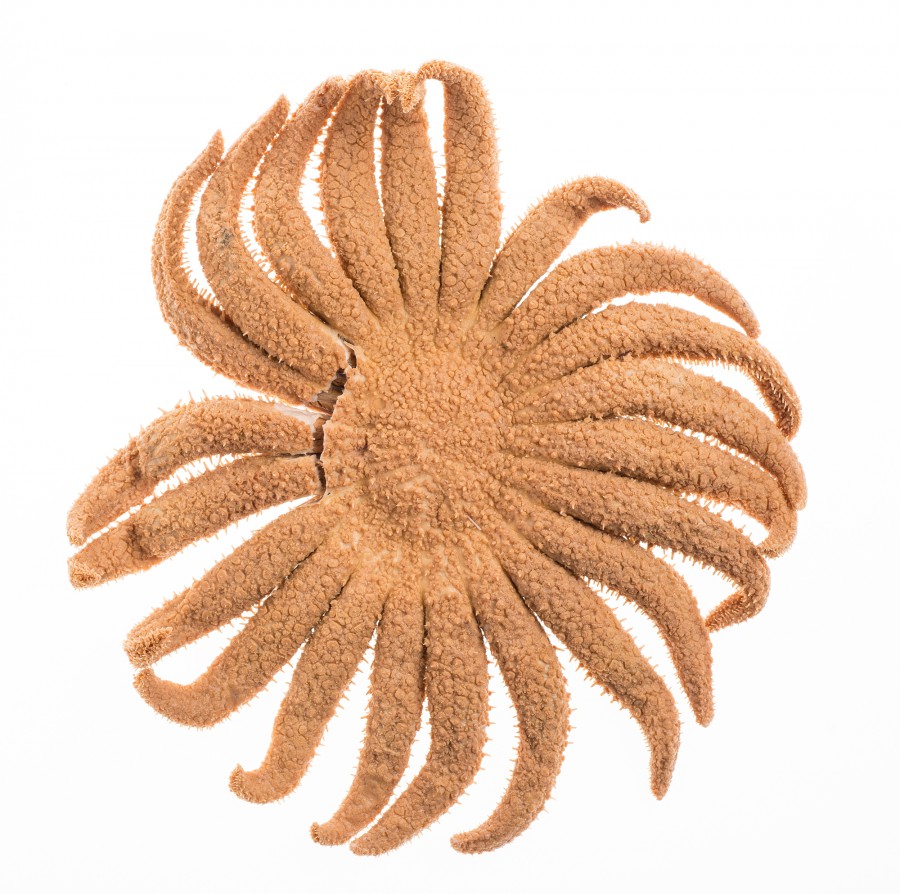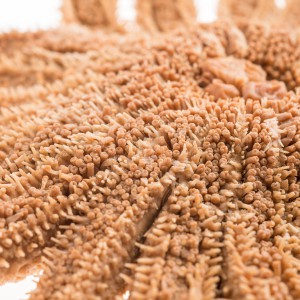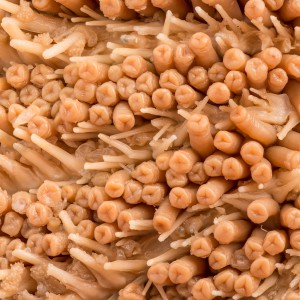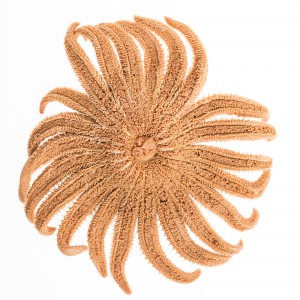Sunflower Star
- Date:
- collected in 1975
- Record:
- 975-00275-008
- Scientific Name:
- Pycnopodia helianthoides
As suggested by this sizeable specimen, the Sunflower Star, Pycnopodia helianthoides, is the largest species of seastar in the world, with an arm span reaching up to 1 meter. It also may be among the fastest seastars given that the species has been clocked at speeds of 1 metre per minute – considered warp velocity relative to its prey.
Indeed the Sunflower Star is a voracious predator, feeding primarily on sea urchins, snails, and clams, and occasionally even other seastars. As such, it is widely recognized as a ‘keystone species’ that has significant effects on the distribution and abundance of other intertidal and subtidal organisms in the Northeast Pacific.
The Sunflower Star is also one of the main species afflicted with the mysterious Seastar Wasting Syndrome that has recently spread throughout the region. The disease, which first appears as lesions but rapidly progresses to complete tissue decay, can be devastating to seastar populations, which in turn, may lead to significant changes for the entire marine community.
